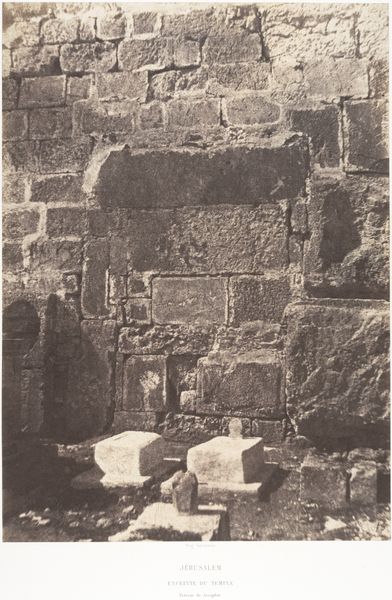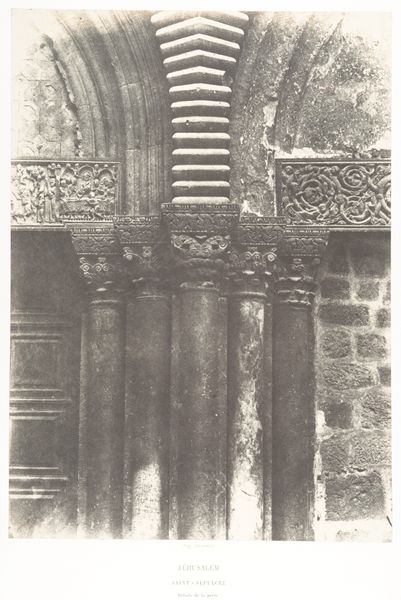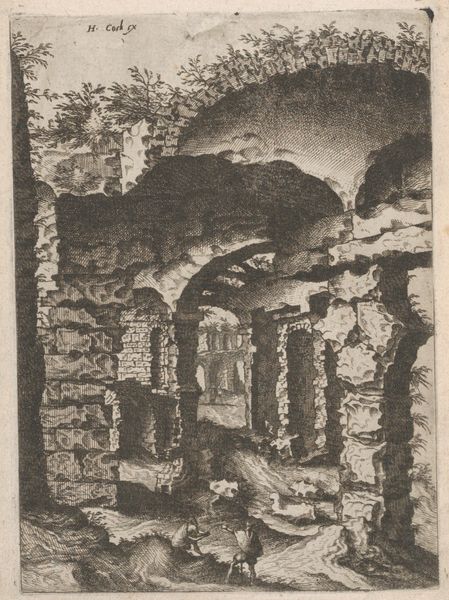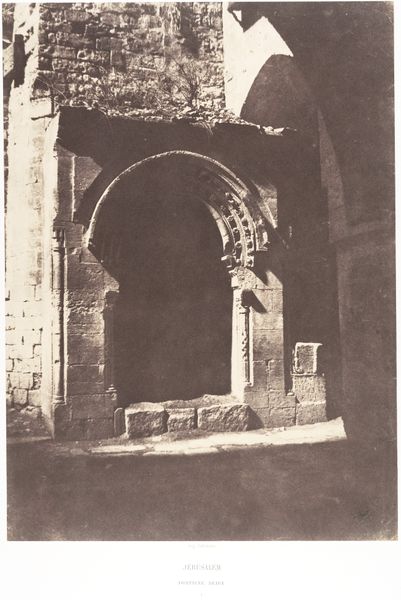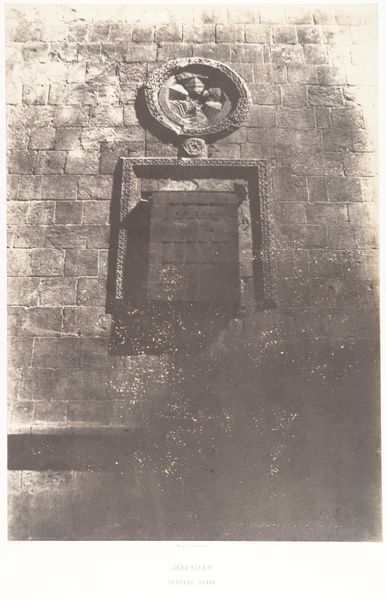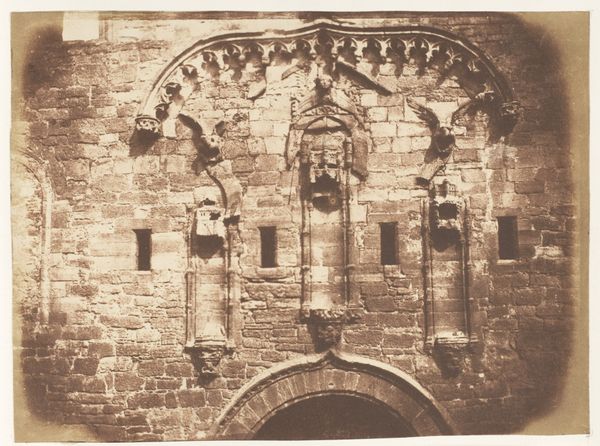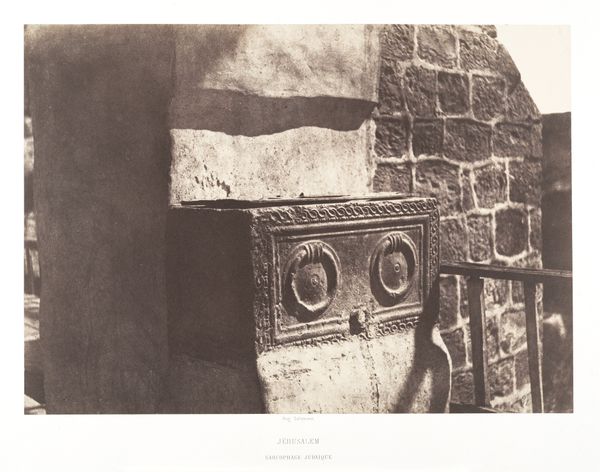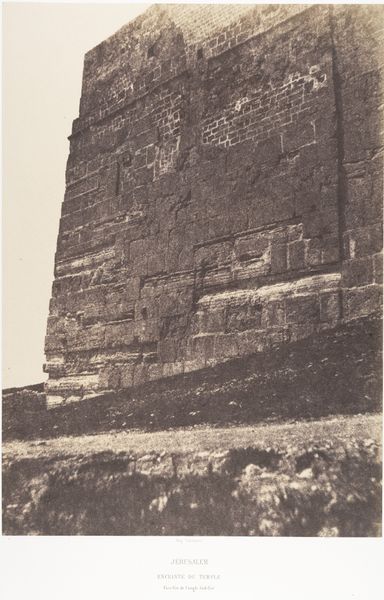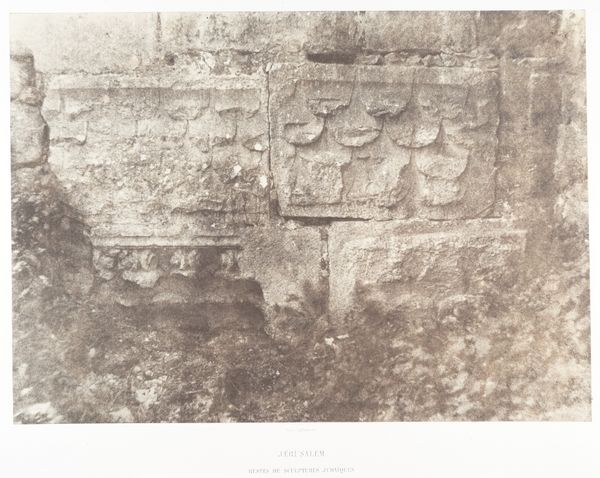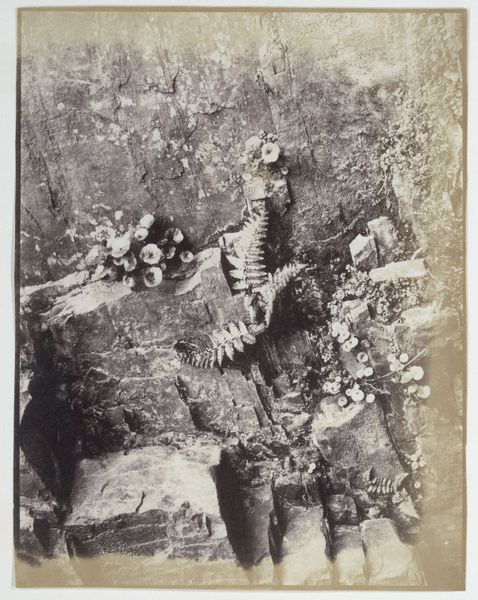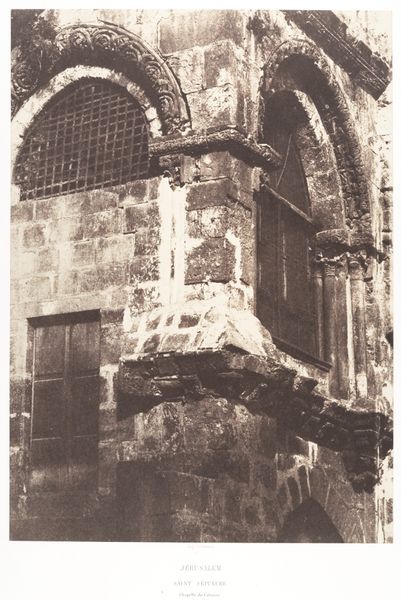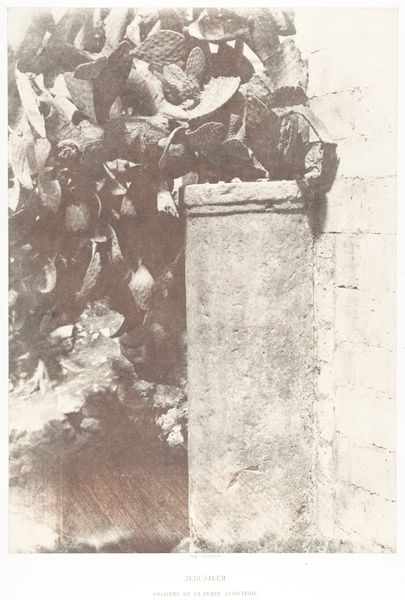
daguerreotype, photography, architecture
#
daguerreotype
#
photography
#
ancient-mediterranean
#
arch
#
architecture
Dimensions: Image: 33.3 × 23.7 cm (13 1/8 × 9 5/16 in.) Mount: 59.6 x 44.7 cm (23 7/16 x 17 5/8 in.)
Copyright: Public Domain
Curator: Auguste Salzmann captured this view, titled "Jérusalem, Saint-Sépulcre, Porte Ouest" between 1854 and 1859. The scene focuses on a section of an arched doorway, and a vessel or basket nestled low in the frame. What strikes you first? Editor: The weight of history, quite literally. The sheer mass of the stone, the rough texture...it feels like a tangible record of labor and time. Curator: It's compelling to think about the labor of its construction and its subsequent place in both spiritual life and the socio-political environment of mid-19th-century Jerusalem under Ottoman rule. What power dynamics were in play as Europe turned its photographic lens toward this land? Editor: Precisely! And Salzmann using the daguerreotype method—an early form of photography known for its detail—hints at a meticulous process. It elevates the simple materials into something lasting, turning the wall and the doorway into objects for both observation and perhaps even reverence. What about that woven object in the lower left? It seems almost anachronistic. Curator: That form offers a beautiful material contrast against the cold permanence of the stones. The question it seems to beg is whose hand placed that basket there? This gate is tied to deeply entrenched religious ideologies; in which historical, economic, or political discourse does the gatekeeper belong? Editor: Yes, it serves a purpose that contrasts with the monumentality of the architecture. Is it meant to be utilitarian? To hold offerings? To highlight, and also humble, this gate? It speaks volumes about daily rituals, both those seen and unseen. Curator: Understanding how faith is interwoven into political power structures allows us to recognize not only the historical moment, but also how sites are imbued with sacred and cultural weight by marginalized people, specifically in places like Jerusalem. Editor: These early photographs can obscure the lived experience, sanitize even, by fixing the image within a scientific frame of "truth." It's essential to examine the photographic materials themselves. Curator: Exactly, but acknowledging those silences and contextualizing them enriches our comprehension and provokes important questioning. Editor: I agree; looking at the hand-hewn materiality, we are invited to ask some questions ourselves. Curator: The ways Salzmann made a permanent and seemingly neutral record of this loaded cultural site speaks volumes about his intentions, the medium itself, and our relationship with the artwork now.
Comments
No comments
Be the first to comment and join the conversation on the ultimate creative platform.

